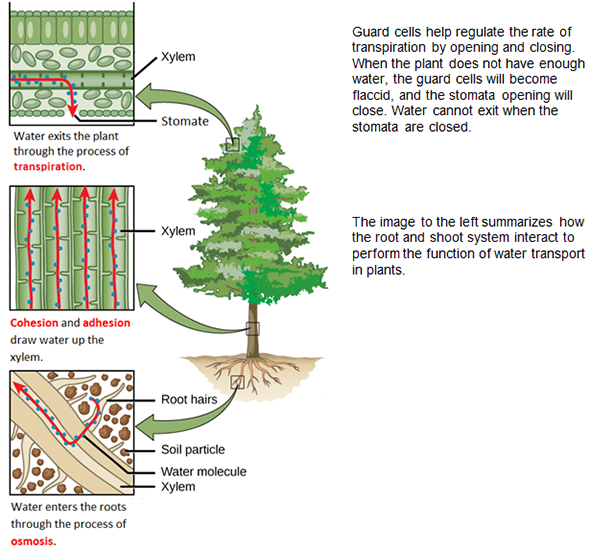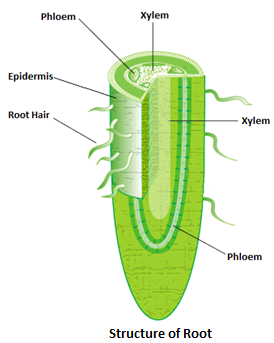
Structure of a Root
Roots are covered in dermal tissue. This layer of cells is called the epidermis. Structures called root hairs extend from a few of the cells of the epidermis. The root hairs absorb water and minerals from the soil.
The image below was taken by a scanning electron microscope and shows the root hairs on the surface of a root.
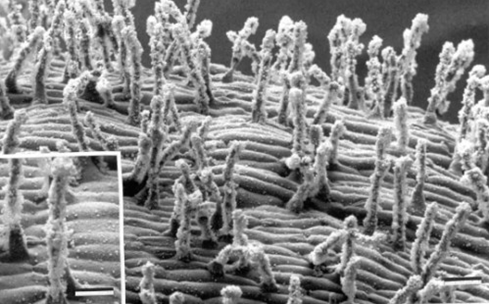
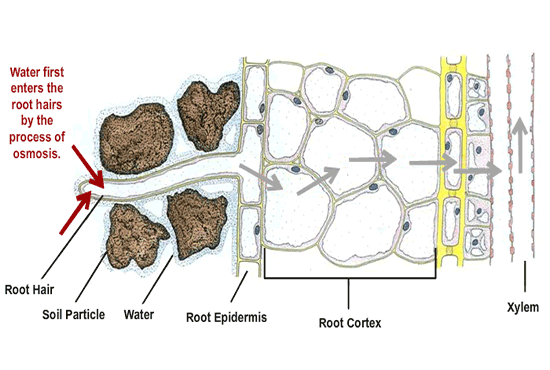
Xylem cells are dead cells. The end cell walls of xylem cells have broken down resulting in long hollow tubes, and the sidewalls have strengthened with rings, or spirals of lignin. Lignin is an organic compound that is similar to cellulose and provides support. The walls of xylem contain holes, called pits, which water enters through. Xylem is a one-way path; water and minerals can only travel up the xylem.
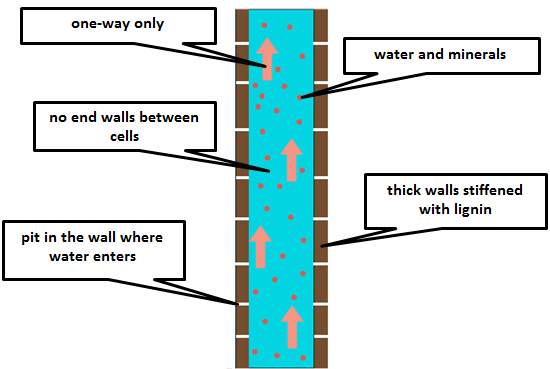
Xylem can easily be seen in celery. Cut off the end of a celery stalk and place the stalk in water colored with food coloring. Let the celery sit in the colored water for 24 hours. Remove the celery and observe. The colored tubes that you see are the xylem.
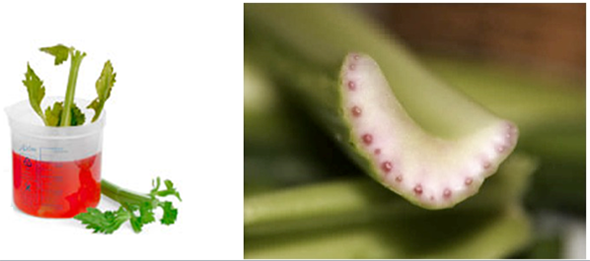
Water moves up the plant, through the xylem, to the leaves.
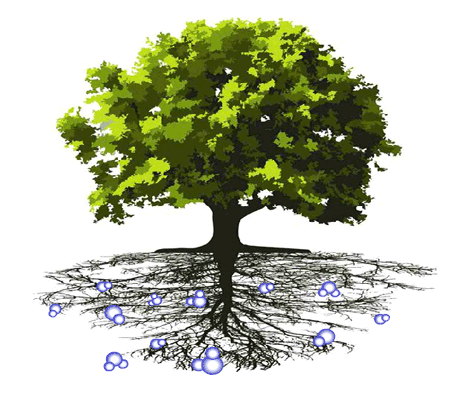
Water is a polar molecule, which means it has a positive charge on one side and a negative charge on the other side. Because a water molecule is polar, it can attract like and unlike molecules.
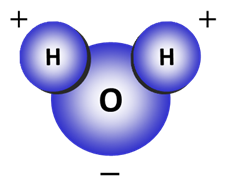
Cohesion is the attraction of like molecules to each other.
Adhesion is the attraction of unlike molecules to each other.
Cohesion and adhesion are two of several factors that help regulate the movement of water through a plant.
The strong attraction water molecules have to each other (cohesion) and to the walls of xylem tubes (adhesion) results in a process called capillary action.
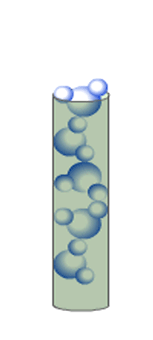
Water exits the plant through openings on the underside of leaves called stomata. The evaporation of water through the leaves is called transpiration.
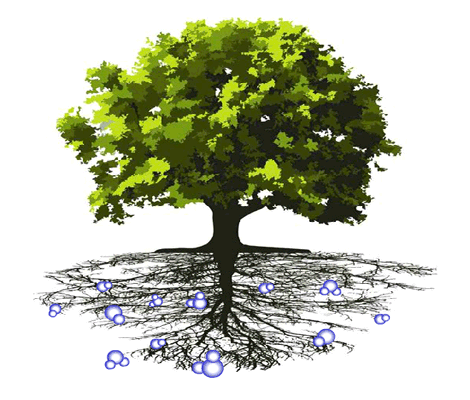
Let's take a closer look at the guard cells and stomata.
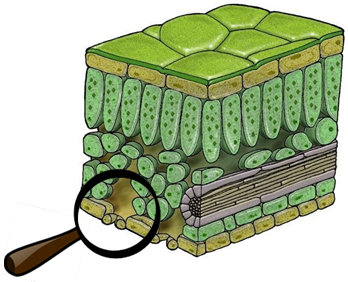
A stomate is a tiny pore or opening located in the epidermis of leaves and some stems. The word stomate comes from the Greek word stoma (plural stomata), meaning, "mouth."
Carbon dioxide, the gas necessary for photosynthesis, enters the leaves of the plant through the stomata. The gas produced during photosynthesis, oxygen, passes out of the leaves through the stomata. Water also exits plants through the stomata during both photosynthesis and transpiration.
Two guard cells, one on either side of a stomate, expand or contract to control whether the stomate is open or closed.
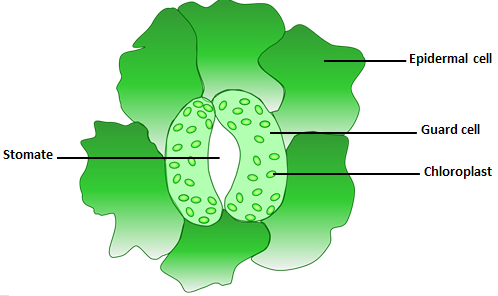
When the guard cells are opened, water exits through the stomata.
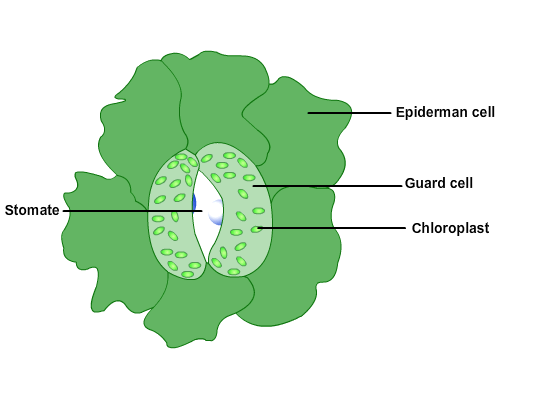
As the water passes through the stomata, it reduces the pressure at the top of the xylem tube, allowing more water to enter the xylem and push upward. This is called transpiration pull.


